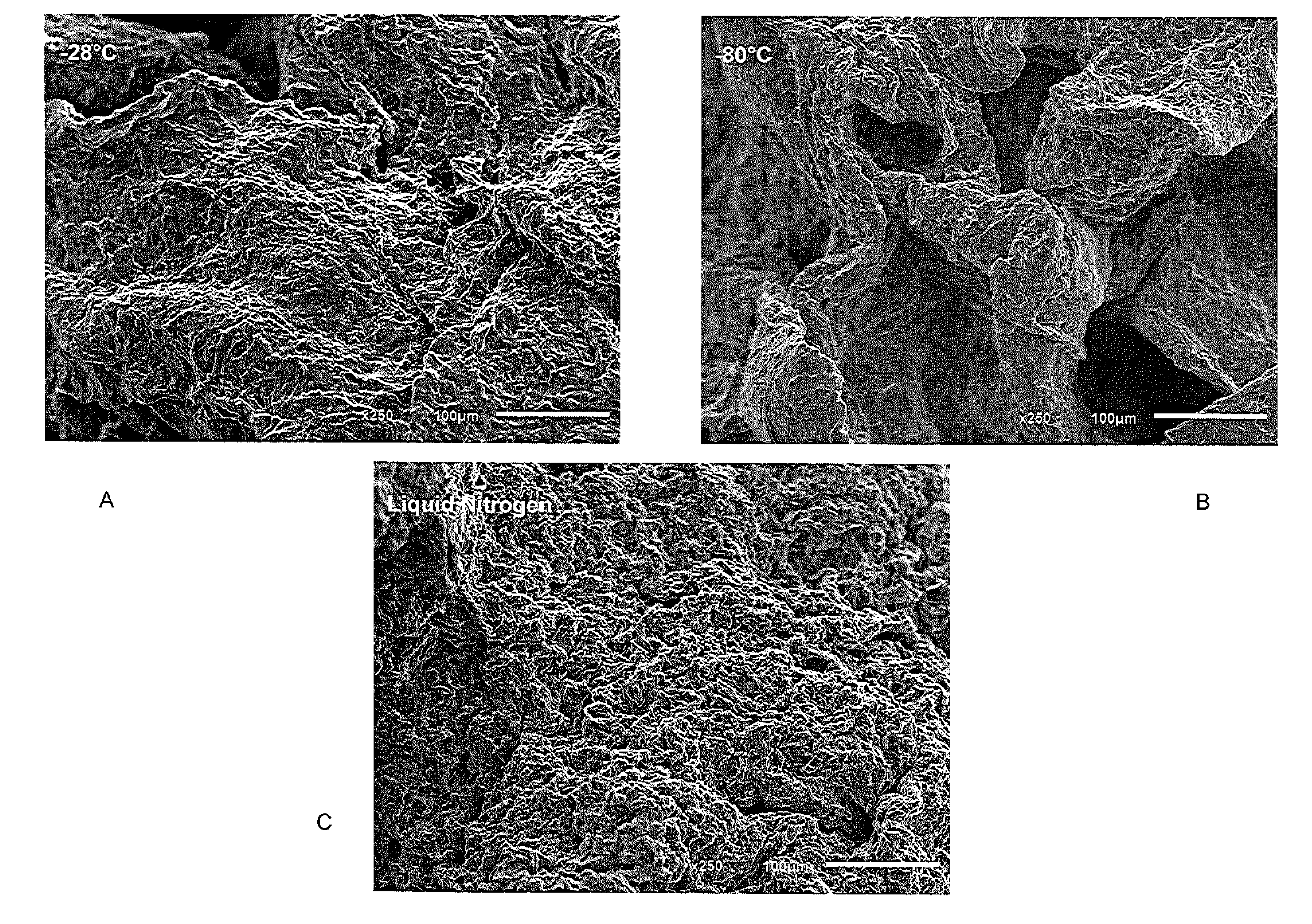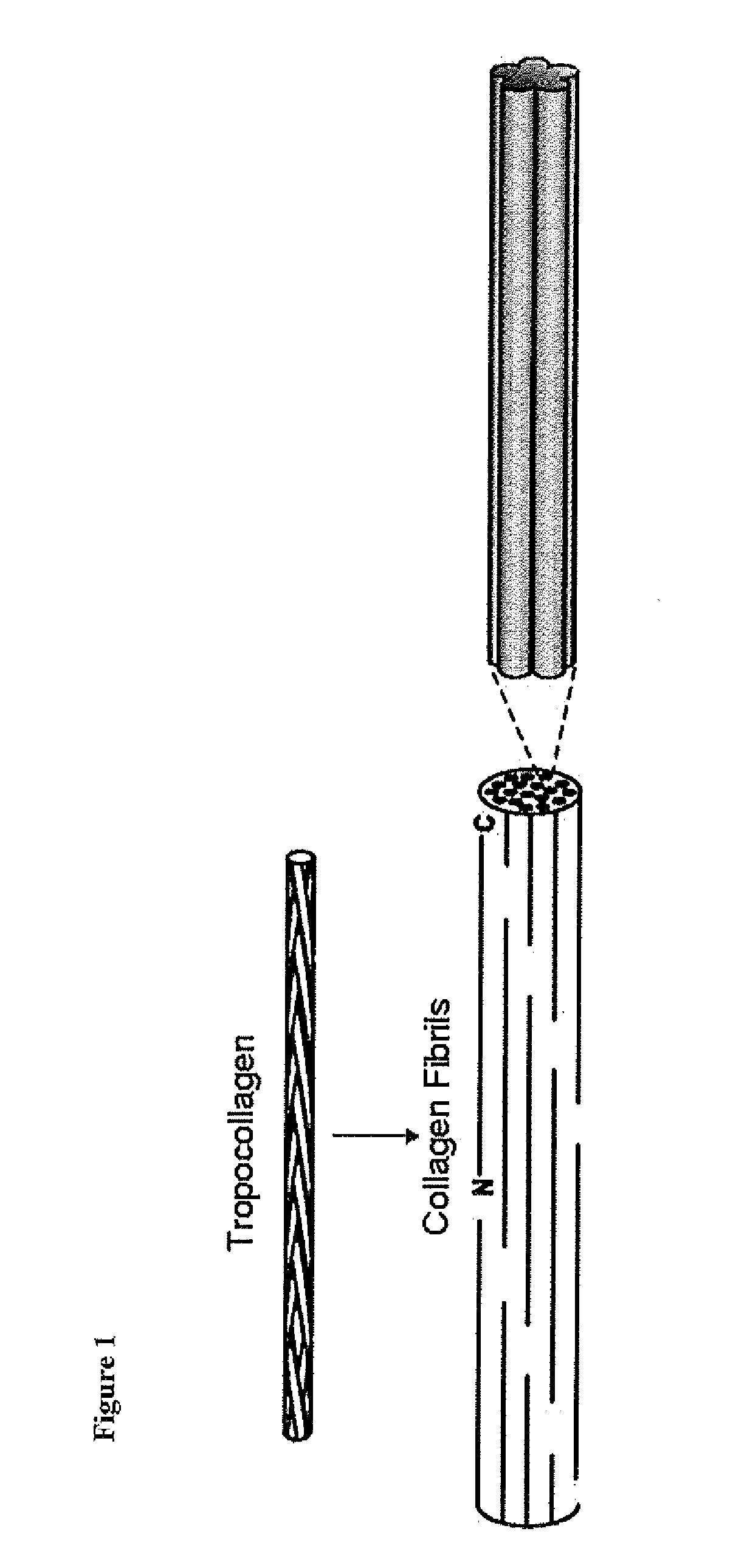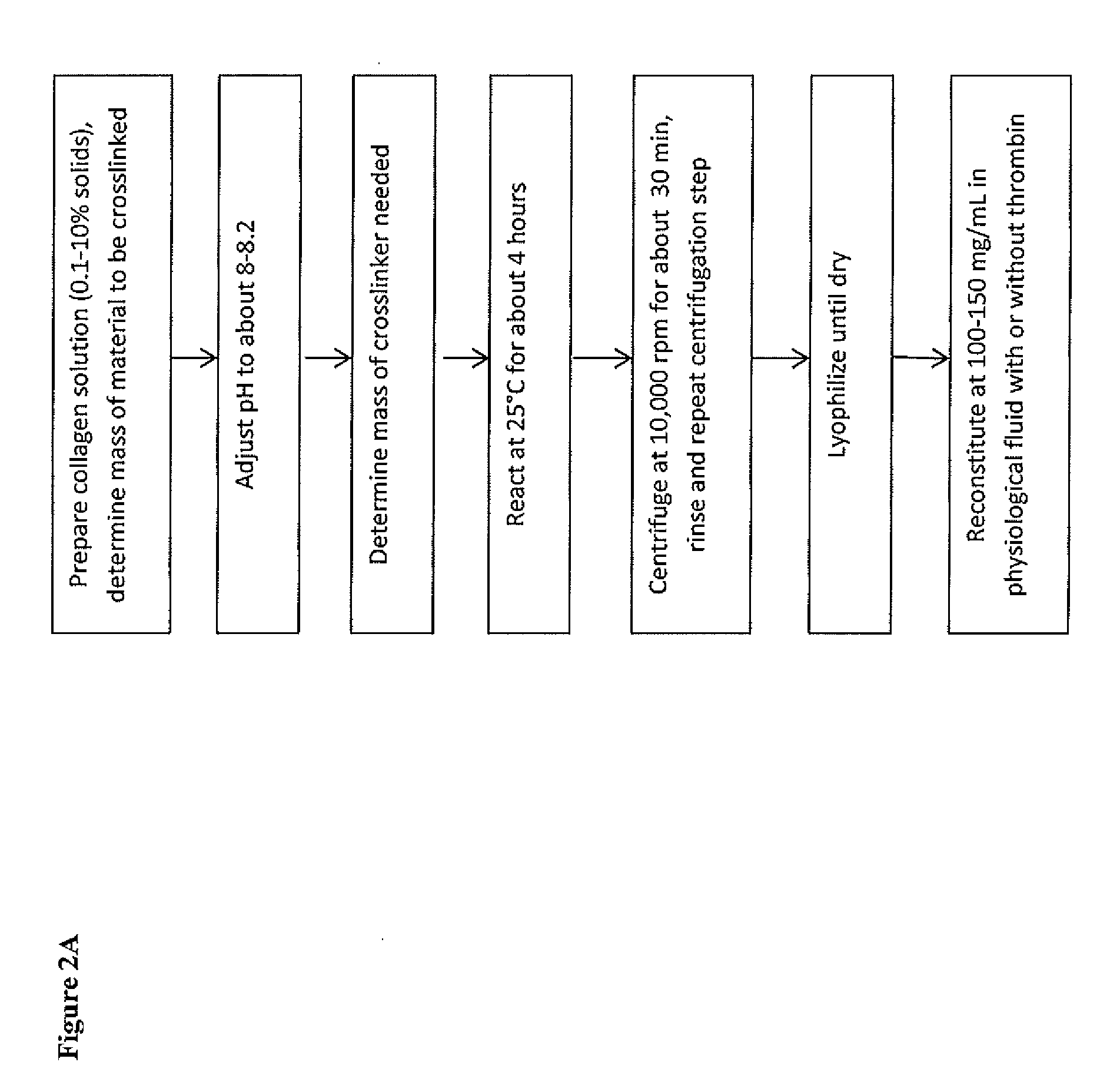Flowable collagen-based hemostat and methods of use
- Summary
- Abstract
- Description
- Claims
- Application Information
AI Technical Summary
Benefits of technology
Problems solved by technology
Method used
Image
Examples
experimental examples
[0091]The invention is now described with reference to the following Examples. These Examples are provided for the purpose of illustration only and the invention should in no way be construed as being limited to these Examples, but rather should be construed to encompass any and all variations which become evident as a result of the teaching provided herein.
[0092]Without further description, it is believed that one of ordinary skill in the art can, using the preceding description and the following illustrative examples, make and utilize the present invention and practice the claimed methods. The following working examples therefore, specifically point out the preferred embodiments of the present invention, and are not to be construed as limiting in any way the remainder of the disclosure.
example 1
Initial Fabrication Studies
[0093]Multiple formulations for the hemostatic compositions of the present invention were fabricated from collagen starting material. Table 3 below provides a qualitative summary of these formulations and the hemostasis testing results. The primary differentiator between materials relates to characteristics pertaining to the ability to physically handle the material, such as the ability to provide precise, localized placement in an actively bleeding site.
TABLE 3DoesEfficacy inStays atnothemostasisapplicationstick to(w / oFormulationsitegauzethrombin)Non-crosslinked microfibrillar NoNoPoorcollagen suspensions (20-60 mg / mL)Non-crosslinked gelatin NoNoPoorsuspensions (20-60 mg / mL)Microfibrillar collagen (20 mg / mL) YesNoMildwith enzymatic crosslinker (Transglutaminase)Microfibrillar collagen (20 mg / mL) NoNoMildwith polymerizing agent (alginate)Glutaraldehyde crosslinked YesYesModeratemicrofibrillar collagen (90 mg / mL)Glutaraldehyde crosslinked gelatin YesYesMode...
example 2
Determination of Crosslinking Ratios and Drying Conditions
[0097]Crosslinking ratios can be determined based on results such as: number of free amine groups; amount of residual crosslinking agent; properties of the dried material; swelling; solubility and various handling properties, such as ease of reconstituting the material, ease of extruding the material after crosslinking, stickiness to tissue (greater stickiness preferred) and stickiness to gauze (less stickiness preferred).
[0098]Initial concentrations of collagen (ranging from about 5% to about 1% solids, or about 50 mg / mL to 10 mg / mL collagen, respectively) for crosslinking were explored in greater detail. Several crosslinking ratios were also explored in greater detail, ranging from 500:1 up to 50:1 and particularly ratios of about 500:1, 250:1 and 100:1. The extent of crosslinking for all materials was determined using a trinitrobenzenesulfonic acid (TNBS) assay. This assay determined the number of free amine groups, in mol...
PUM
| Property | Measurement | Unit |
|---|---|---|
| Length | aaaaa | aaaaa |
| Fraction | aaaaa | aaaaa |
| Concentration | aaaaa | aaaaa |
Abstract
Description
Claims
Application Information
 Login to View More
Login to View More - R&D
- Intellectual Property
- Life Sciences
- Materials
- Tech Scout
- Unparalleled Data Quality
- Higher Quality Content
- 60% Fewer Hallucinations
Browse by: Latest US Patents, China's latest patents, Technical Efficacy Thesaurus, Application Domain, Technology Topic, Popular Technical Reports.
© 2025 PatSnap. All rights reserved.Legal|Privacy policy|Modern Slavery Act Transparency Statement|Sitemap|About US| Contact US: help@patsnap.com



